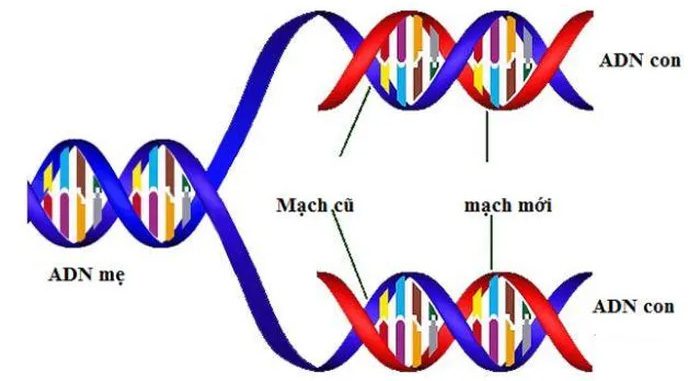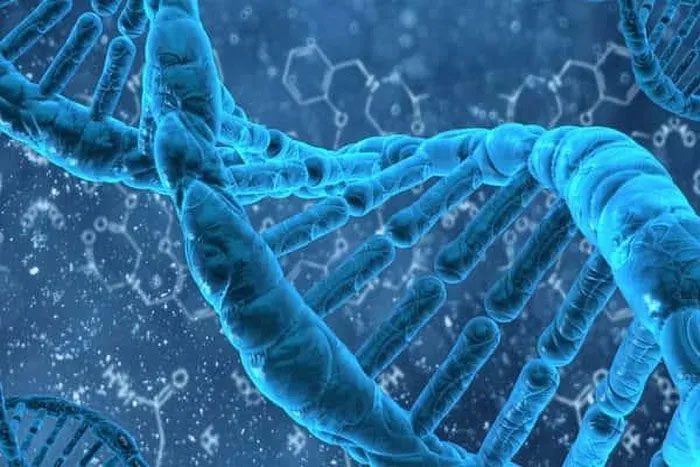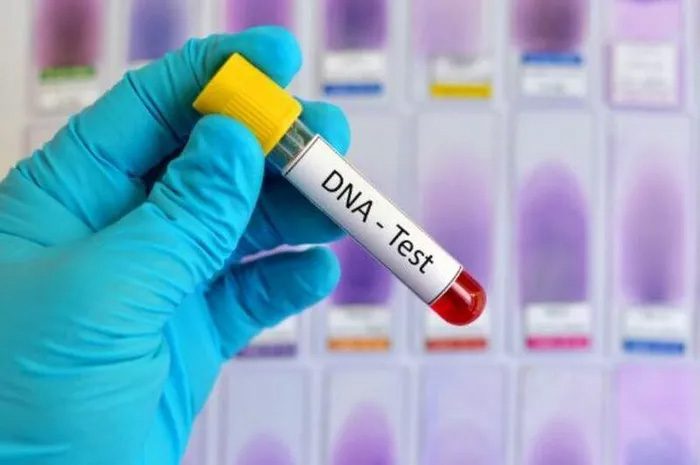As DNA serves the function of containing genetic information, it has numerous practical applications that benefit human life.
1. What is DNA?
DNA, also known as deoxyribonucleic acid, is the English term for DNA, which is an abbreviation of Deoxyribonucleic acid.
DNA is a complex molecule that carries the genetic information of living organisms. Almost all multicellular organisms possess a complete set of DNA. During the process of reproduction, DNA undergoes division, allowing a portion of its genetic material to be passed on to the next generation.
DNA is formed from many nucleotides arranged in two long strands that create a structure known as a double helix. The structure of the double helix resembles a ladder, with base pairs forming the rungs and sugar-phosphate molecules forming the vertical sides of the ladder.
Chemically, DNA is a double helix made up of base pairs attached to a sugar-phosphate backbone. Human DNA contains approximately 3 billion base pairs, and over 99% of these are identical across all individuals. The sequence of these fundamental components determines the information necessary for constructing and maintaining an organism.

After synthesizing DNA, one mother cell divides into two identical daughter cells.
2. What are the characteristics of DNA?
DNA has the ability to replicate and copy itself. The process of replication synthesizes two identical daughter cells from the mother cell based on complementary principles and semi-conservative principles. In this self-replication mechanism, the two single strands of the mother DNA gradually separate to form two new template strands. The new strands will synthesize and coil to create two daughter DNA molecules. Therefore, after DNA synthesis, one mother cell produces two identical daughter cells.
Additionally, DNA exhibits specificity and high diversity:
- Specificity of DNA: In each species, the quantity, composition, and arrangement of nucleotides in the DNA molecule adhere to strict and species-specific rules.
- Diversity of DNA: Simply changing the arrangement of the four types of nucleotides can create different DNA molecules.
The diversity and specificity of DNA are the basis for the diversity and specificity of each species. This explains why, despite being of the same human race, groups of people in different geographical regions such as Asia, Europe, America, and Africa exhibit distinct characteristics.
3. What functions does DNA serve?
DNA functions to store, preserve, and transmit genetic information across generations. This genetic information contains data about the structure and characteristics of all types of proteins present in an organism’s body, thus contributing to the determination of the organism’s traits.
The self-replication process of DNA is the molecular basis of inheritance and reproduction, maintaining the stability of each species’ characteristics across generations, ensuring the continuity of life.
Thus, DNA has three important functions:
- Encoding genetic information: DNA encodes the quantity, composition, and sequence of nucleotides.
- Preserving genetic information: When synthesizing or dividing DNA, if there are errors during this process, the DNA molecule is almost always corrected by the cellular enzyme system.
- Conserving genetic information: Through the process of DNA replication, genetic information is transmitted from one generation to the next.

DNA functions to store, preserve, and transmit genetic information across generations.
4. Applications of DNA functions in life
The function of DNA is to carry genetic information, preserve, conserve genetic data, and undergo changes that form the basis for evolution. The genetic information contains data regarding the structure and characteristics of each type of nucleotide in an organism’s body, thereby influencing the organism’s traits.
Because DNA serves the function of containing genetic information, it can be applied in diagnosing certain diseases or conducting paternity tests.
Pre-clinical testing
Some hereditary diseases passed from one generation to another, such as heart disease, breast cancer, and colorectal cancer, may carry recessive genes, making it difficult to know if one is a carrier of a hereditary condition. Therefore, DNA testing is recommended to determine health status and identify early treatment methods.
Prenatal testing
Prenatal screening tests assist in diagnosing genetic disorders in the first ten weeks of pregnancy, such as Patau syndrome causing cleft lip and palate, Klinefelter syndrome leading to infertility, Down syndrome, and trisomy 18.
DNA paternity testing can be conducted from the seventh week of pregnancy with the presumed father, allowing for the detection of familial relationships.
Using DNA for paternity testing
DNA contains genetic information spanning many generations within a family. Therefore, DNA testing helps determine relationships such as father-son, sibling relationships, etc.
In special cases such as birth certificates, proving familial relationships, or legal disputes, governmental agencies may require DNA test results to confirm paternity. Specifically:
- Birth certificates: When a child is born before their parents have registered their marriage, or when a birth certificate only lists the mother’s name without the father’s name, it may need to be supplemented…
- Procedures for recognizing relatives: DNA helps confirm grandparent-grandchild, father-child, mother-child relationships…
- Confirming alimony rights after divorce requires verification of inheritance rights and other legal procedures…
- Asset division.

DNA can be widely applied in practical life to serve human needs.
5. What types of biological samples can be used for DNA testing?
- Blood samples: Blood is collected similarly to other routine tests and sent to the analysis lab for processing.
- Hair samples: The condition is that the hair must retain the root for testing. The person being tested will provide 2-3 strands of hair with roots.
- Nail clippings: This is a simple sampling method and is therefore very common. When collecting samples, ensure that the nails are thoroughly cleaned.
- Oral mucosa samples: In some cases, oral mucosa samples are used. This is a white cell lining located in the inner cheek. A technician will use a specialized tool to scrape the inside of the cheek to collect the cells. Prior to this, the mouth should be cleaned thoroughly.
- Umbilical cord samples: For newborns when the above samples cannot be obtained, umbilical cord samples are used for convenience. A small segment of the umbilical cord is placed in an envelope and sent to the testing facility.
- Amniotic fluid: For fetuses still in the womb, DNA testing can also be conducted through amniotic fluid. This procedure requires the fetus to be at least 15-16 weeks old. The amount collected is 3-5 ml. This method not only confirms familial relationships but also helps doctors screen for certain genetic diseases such as Down syndrome and Patau syndrome.
- Other samples such as toothbrushes, baby teeth, semen, and razors…
Unique fishbone-shaped sandbank appears for 2 hours at low tide in China
The most terrifying snow disaster in history
Concept of a carbon-free “walkable city” for 100,000 residents


















































